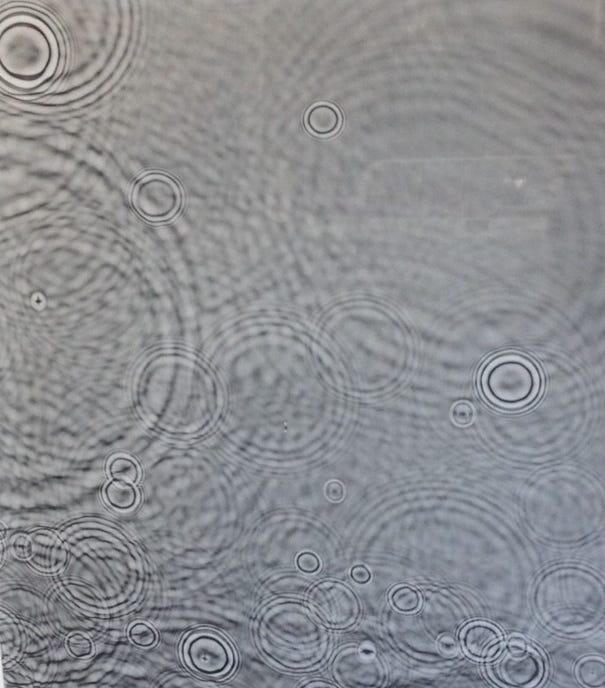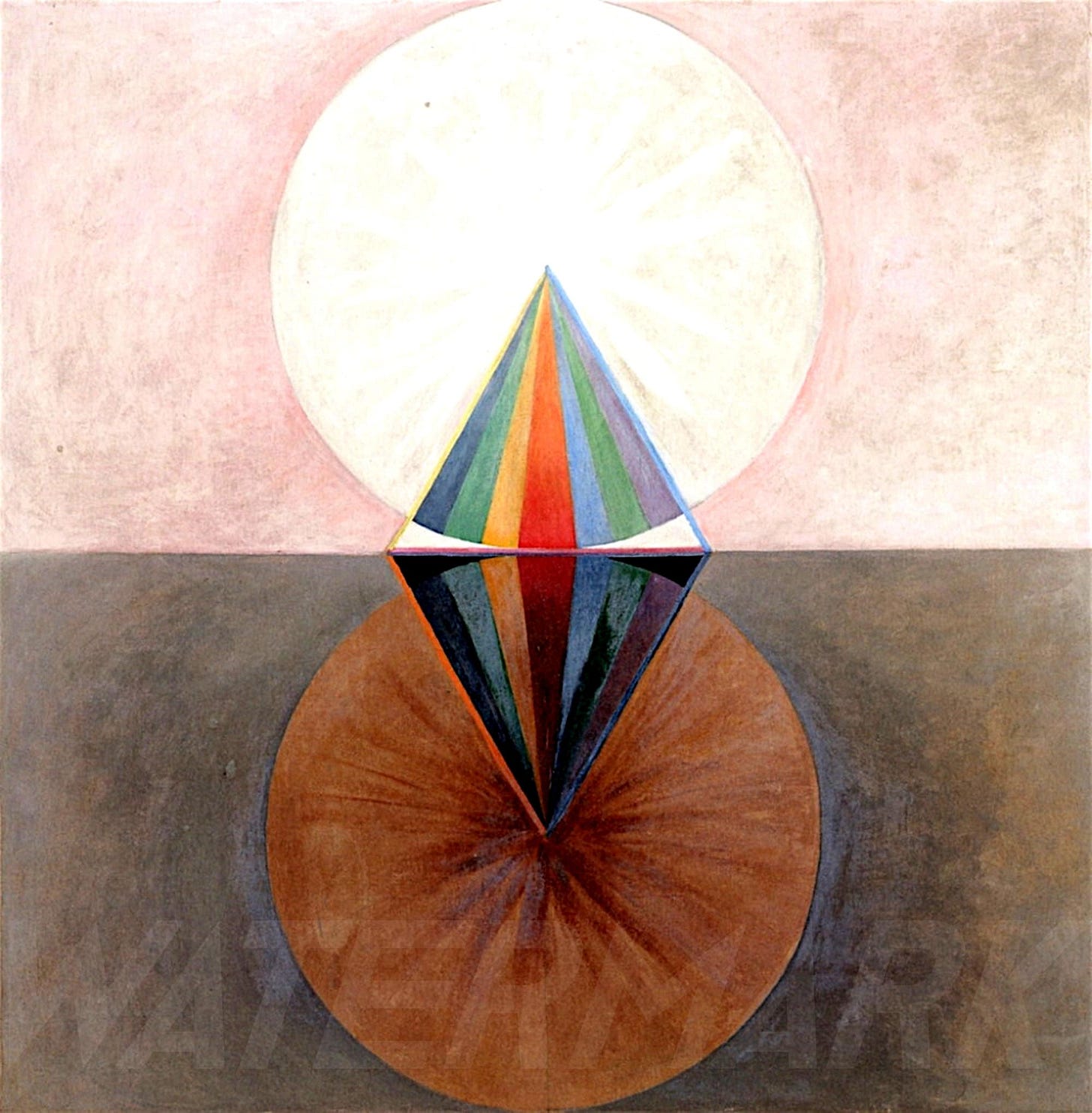Restoring Meaning to the World
Toward a Hermeneutics of Everything
“The unfolding of the universe around us consists of excitations of That Which Experiences from which we are dissociated.” - Kastrup. Image by Adam Fuss.
It takes time to assimilate Bernardo Kastrup’s idealist viewpoint — developed in The Idea of the World, More than Allegory: On Religious Myth, Truth, and Belief, and other works — but it is well worth the effort. Kastrup’s philosophy is similar to what I proposed in earlier works. In 2012: The Return of Quetzalcoatl (2006), I promoted “idealism” over materialism, reviewing ideas from Amit Goswami, Patrick Harpur, and Rudolf Steiner, among other thinkers.
Kastrup’s great service is to argue for philosophical idealism in a more comprehensive and logically satisfying way than anyone has done before. As a scientist who worked at CERN, he is well equipped to show how quantum physics meshes with the idealist model. Taking the debate between materialism and idealism to the next level, he proposes, based on the evidence, that “the seemingly objective world we live in is a result of mental process at work and, as such, akin to a transpersonal dream: the tables, chairs, stars and galaxies we perceive within it do not have an existence independent of our minds.”
Just to review, idealism postulates that there is no dichotomy between consciousness and matter, no “hard problem” of consciousness, because consciousness — or ‘That Which Experiences,’ ‘TWE’ for short — is all that is. As individuals, we are temporarily dissociated “alters” of this underlying consciousness, which Kastrup describes as unitary and instinctive. “We, as well as all other living organisms, are but dissociated alters of universal consciousness, surrounded like islands by the ocean of its thoughts,” he writes in The Idea of the World. The inanimate universe we see around us is the extrinsic appearance of these thoughts. The living organisms we share the world with are the extrinsic appearances of other dissociated alters of universal consciousness.”
If we possessed some kind of meaningful public forum where philosophical ideas could be debated openly, I am convinced that idealism, at this point, would triumph over materialism / physicalism. This would be an incredible achievement for the contemporary world, which remains trapped in reductive materialism. But such a forum does not exist, so the transition is happening incrementally.
Paid subscribers receive ongoing special offers, as well as my gratitude.
As I have noted before and will explore in more depth in future essays, the transition to idealism as our philosophical foundation will have benevolent and transformative effects on our civilization. We have hit a wall under the tyranny of materialist thought. Materialism denies our innate sense that the universe possesses a purposeful order. It poses a model of reality that is inherently empty, nihilistic, and grim.
Following Alan Watts, Kastrup connects the rise of materialism in the 19th Century with the modern West’s drive toward global dominance:
The allegedly skeptical scientific myth that dominates contemporary culture is, in fact, based on a peculiarly biased value-system: an emotional and irrational need to deny all meaning and purpose in nature. Alan Watts saw this as a reflection of the nineteenth century ethos under which the values of contemporary science congealed. He wrote:
The world-conquering West of the nineteenth century needed a philosophy of life in which realpolitik—victory for the tough people who face the bleak facts—was the guiding principle. Thus the bleaker the facts you face, the tougher you seem to be. So we vied with each other to make the Fully Automatic Model of the universe as bleak as possible.
In other words, science, as the exclusive domain of men in the nineteenth century, incorporated in its very fabric the adolescent male’s need to look tough. When listening to the spokespeople of science and neo-atheism today, one in fact wonders whether much has changed since then.
In earlier essays, I looked at Mark Fisher’s Capitalist Realism and other works studying the impacts of neoliberalism as our underlying paradigm. Neoliberalism — and other modern Capitalist ideologies, such as Libertarianism — has an innately materialist and cynical bias. The world is reduced to physical forces where the only things that can be valued are material and tangible. This is what the occult philosopher Rene Guenon decried as “the reign of quantity.” This philosophy impels us toward a catastrophic cut de sac (I recommend checking out the recent Joe Rogan podcast with Tristan Harris and Daniel Schmachtenberger which describes an array of existential threats as technology evolves faster than our cognitive or ethical capacities).
Religious Myth and Transcendent Truth
Kastrup argues that, once we make the shift to idealism, we can understand religious myths in a different way. Over millions of years of evolution, we first developed physical organs of perception and, very recently, the capacity for language-based cognition. Organs of perception and language-based cognition helped us maximize our capacity to survive in our natural environment. There is no reason to believe we can use our limited language or reason to access “absolute” or transcendent truth. Religious myths, Kastrup argues, are not simply allegories. They point toward transcendent truths that can be experienced and felt, but are beyond the capacity of language to communicate. Hence, they can only be expressed symbolically.
Idealism brings science, religion, and mysticism back together. It gives us a sophisticated way to connect with the unifying and universalizing aspects of religious truths, and build authentic bridges between those who identify as secular and progressive, and those who see the world through a religious lens. Fritjof Schuon’s book, The Transcendent Unity of the Religions, had a major impact on my thinking. He argues there is an esoteric (mystic, often secretive) and an “exoteric” (devotional, public) side of every religion. Only the public-facing or exoteric sides are in conflict; the esoteric doctrines can be overlaid. We now have a reason to reconcile science and religion, recognizing religion as a valid way of approaching reality, not an irrational holdover to be cast aside.
A Hermeneutics of Everything
Kastrup makes the crucial point that the idealistic position allows us to ascribe meaning and intention to the world as a whole, once again:
In a mental world, the images we perceive on the screen of perception aren’t essentially different from our own imagination, except in that the former are shared across observers. This collective ‘world dream’ symbolically points to underlying transpersonal mental dynamics, just as regular dreams symbolically point to underlying personal mental dynamics. As such, the world is amenable to hermeneutics: it means something; it points to something beyond its face-value appearances; it evokes something a priori; it is not its own meaning.
I find this thrilling because I feel deep alignment with certain visionary thinkers — Rudolf Steiner above all — whose work has been completely rejected by the mainstream / materialist establishment. Steiner called his philosophy “monistic idealism,” and his life’s work was basically the exact project that Kastrup proposes in The Idea of the World: In dozens of books and hundreds of lectures, Steiner developed a “hermeneutics of everything,” based on the knowledge that reality expresses itself symbolically, much like a dream, and is intrinsically intelligible, like a vast mind or mental world.
“All philosophers are artists in the realm of concepts,” Steiner wrote in The Philosophy of Freedom, where he convincingly refuted Kantian dualism. Kastrup’s work gives us a new way to conceive of Steiner’s project, and to approach it with the seriousness it deserves.
Rudolf Steiner had a major influence on the artist Hilma af Klint
Similarly, the philosophical paradigm of idealism gives us a logical way to understand the advanced local knowledge systems found in different indigenous cultures around the world. Some of these cultures seem, according to a great deal of anecdotal evidence (which my own experiences confirm), capable of psychic or paranormal effects that go against those conventions we perhaps mistakenly call the “laws” of nature. My sense is that many local cultures possess an internally consistent philosophy and interpretive system that actually produces physical effects that may seem impossible to us, but are completely sensible within their way of being and knowing. To me, this suggests a new project for humanity in the future.
“The world you see is the myth you are in,” notes Patrick Harpur in The Philosopher’s Secret Fire. Materialism is still a myth, if a particularly depleted one. Within the mythic structure of reductive materialism, we only see what that ideology allows us to see. We are blind to anything outside of it. Now we have to use our overdeveloped “Left brain” tendency toward logic and scientific rationalism to back our way out of the materialism prison we have created for ourselves. Kastrup’s rigorous presentation of idealism helps with this project.






